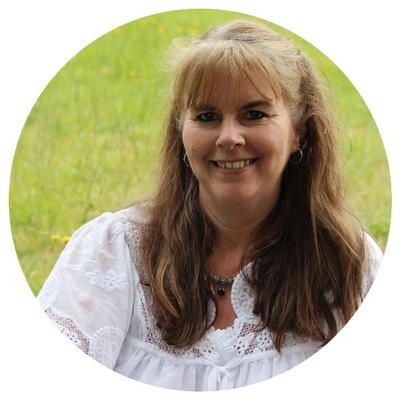Deborah Schlegel
 I wear several different hats! I’m a fiber artist working mainly in dyed and surface designed fabrics and art cloths. I love fibers, though, so I am constantly making pieces outside of my formal artwork, using crochet, embroidery, sewing, felting, … if it involves fabric/fibers I probably do it! Right now I’m especially interested in natural dyes, crochet design, and repurposing/remodeling clothes.
I wear several different hats! I’m a fiber artist working mainly in dyed and surface designed fabrics and art cloths. I love fibers, though, so I am constantly making pieces outside of my formal artwork, using crochet, embroidery, sewing, felting, … if it involves fabric/fibers I probably do it! Right now I’m especially interested in natural dyes, crochet design, and repurposing/remodeling clothes.
I’m also a graduate student. Currently I’m finishing my thesis research for a Masters degree in Art Education at Arizona State University and investigating how art is being taught on internet virtual worlds. I’ve taught art to students ranging from toddlers to seniors, in private and public schools, community centers, and workshops. Teaching keeps me focused on my own artwork and keeps me moving ahead in my skill levels.
And I’m a blogger! Art Threads is my fiber/fabric inspiration and tutorial art blog. I blog about what I like to do - sewing, felt, quilting, dying, embroidery, crochet, ... pretty much anything you use thread to create with! I also use the blog to teach about art. People often think of art as involving hard to find or use materials or as requiring advanced drawing/painting skills they haven’t had the opportunity to study. Fiber arts are easy to learn and you can buy the materials at your local stores. Once the basics are learned, anyone can use them to produce art at home.
Link:
Projects and Tutorials on FaveQuilts:
Bias Tape Part 1: Cutting the Fabric
Bias Tape Part 2: Machine Method
Bias Tape Part 3: Hand Tool Method
Bias Tape Part 4: Sewing the Tape
Getting to Know Your Sewing Machine
Grandmother's Flower Garden Quilted Pillowcases Part 1
Grandmother's Flower Garden Quilted Pillowcases Part 2
Candy Jar Quilted Table Runner
Read NextMelissa Corry
Your Recently Viewed Projects
Deborah Schlegel
Jun 24, 2011
Oh boy! Totally disregard that last answer - I came up with a quick answer and was wrong. You won't be putting a border around every flower block since the border is one hexagon wide. I'd suggest working it out first on hexagon graph paper (it's easy to get confused working with these), but I'm estimating about 97 whole flower blocks, the same number of partial blocks as I figured out before, and around 900 connecting blocks. Much better!
Deborah Schlegel
Jun 21, 2011
Quilt sizes are easier to figure out than the pillowcase was It's making that tube that's different Basically you'll just be making a square or a rectangle First figure out how big you want your quilt to be I also have a California king and the quilt on it is by inches it goes under my pillows not over The hexagon size in the pillowcase pattern will make a inch block - times is That's close enough to the measurement of the quilt I have that I'd make a by square quilt so that means you want to make complete blocks You'll end up with a wavy edge since the hexagons aren't in straight rows To make the edges even you'll also need half blocks per side - half blocks in all And to make the corners even you'll need quarter blocks If I did my math right that's about white…Read More hexagons and colored hexagons It sounds daunting but it'll be gorgeous Machine quilting something that large will take a long arm sewing machine - hand stitching would probably look better on this quilt anyway Happy quilting Deborah
terryaclifford 120 5014
Jun 20, 2011
Hi Deborah,br br I love your grandmother's garden flower quilted pillow cases and would like to make them along with the matching california king size bed quilt. This is my first quilting project and I am not sure how to adapt your pillow case pattern into a large quilt. Can you give me guidance as to how many colored hexagons flowers I would need and how many white hexagons I would need? I would really appreciate it.br br Thanks,br br Terry Clifford
Report Inappropriate Comment
Are you sure you would like to report this comment? It will be flagged for our moderators to take action.
Thank you for taking the time to improve the content on our site.


















